Samsung Galaxy Note 3 Review
by Brian Klug on October 1, 2013 9:00 AM EST- Posted in
- Smartphones
- Samsung
- Mobile
- Android 4.3
- galaxy note 3
S-Pen
I was a tablet user for just over 4 years, but when I mean tablet I mean the old school kind with an active digitizer and Windows, before the age of capacitive multitouch everywhere. With the original Note, I was excited to see active digitizer finally represented again in a mobile device, complete with all the hover and pressure features that come with it. I still find it impossible to use styli on capacitive panels since they lack the resolution and fidelity for the kind of writing I used to do.
With the Note 3, neither quality of the digitizer nor the S-Pen formula change, and that’s a good thing. It’s still the same pen, and from what I can tell, still the same sensitivity and hover distance, and still Wacom based as well. I’m not going to go super in-depth with S-Pen since by this time it should be something readers are familiar with since we’re on the third iteration of Note (and multiple tablets) with the pen.
The Note 3 stows the pen inside itself in basically the same spot as its predecessors, and has the same pen-removal detection and single button on the pen itself. I have no complaints with how it feels or my ability to hold it and write on the screen, and the Note continues to do wrist rejection very well so you can rest your hand on it for making fine grained drawings with a bit of added support.
Perhaps the biggest single improvement with the Note 3 from the perspective of the pen is that it now triggers the menu and back capacitive buttons on the front of the Note 3. I found it confusing on the Note 2 and Note that with the pen out I had to switch between this weird finger and pen modality, rather than be able to accomplish everything with either appendage. With the Note 3, it’s now possible to do just that – it sounds crazy but that single change is the biggest thing that made me instantly happy with the Note 3 the second I pulled the pen out, just being able to hit menu and back with the stylus and have it actually work finally.
With the Note 2 I started to feel like the features that surrounded the pen were getting overwhelming, and I wasn’t sure what feature I should be using at a given time. There’s definitely feature creep each generation as things get added but never really removed, with the Note 3 Samsung does a great job mitigating most of this by surfacing what they believe are the standout features of the S-Pen experience in a popup dialog with a ringed interface and shortcuts to functions. Previously removing the pen would jump you to a special homepage with relevant links if you were on a homepage. Instead if you pull the pen out, this new overlay appears. The overlay makes a lot more sense and has helped me use the pen a lot more than I did previously.
I remember joking with another reviewer that I suspected a large number of Note owners used the pen once, put it back, and never really bothered or understood it after that, and instead were just after the Note for its large display. That sort of mirrored my own use with the Note previously since I’m not artistically inclined or sitting in lectures writing down equations and graphs and diagrams as fast as I possibly can anymore (though soon that hopefully will return with grad school). With the Note 3 and this new interface also shared with the Note 10.1 2014 edition I’m using the pen a lot more since it’s a reminder of what’s really handy.
The ring switcher has shortcuts to action memo, scrap booker, screen write, s finder, and pen window. You can also get to this switcher by hovering and pressing the button on the pen.
Action memo pops up a sticky note that you can immediately start writing on, and it’s the most useful honestly. These notes can then be transcribed on the fly and used to either create contacts or events or look at a location in google maps. The idea is that you’d quickly jot down a phone number and name, or an address, and then be able to act quickly on them or save it for later. I find this works surprisingly well. Samsung says their handwriting transcription engine is also even more accurate this generation, but I don’t have specifics.
Scrap booker lets you grab content displayed on the screen and store it for later, this seems to also parse what’s in a view and intelligently take metadata along with it, for example web pages, YouTube videos, and maps will all get pulled along.
Screen write is a perpetual favorite, it takes a screenshot that you can then annotate or draw on top of. Handy and useful if you need to send something with a pithy remark or drawing to someone either for work or play.
S-Finder is a universal search function that parses through all your notes and memos and writing for a string entered in the search bar. Samsung is always transcribing notes so they’re searchable, this surfaces everything including those hand written notes. I’m reminded of how OneNote search worked, very useful if you’re taking a lot of notes.
Pen window is like a new version of multi window, except instead of snappable windows it’s a viewport of arbitrary size matching roughly what you draw on screen. In practice though the windows are the same aspect ratio as the display (16:9) just whatever rough size you’ve drawn the square and scaled to fit. Samsung continues to try and solve the multi-window problem and admittedly does a novel job here given the constraints of the Android platform. Not every app can be put in one of these smaller windows, rather a subset of the multi window applications.
S Note and the other applications that I remember being present on the Note 2 are still around, as well, it’s just this smaller subset that’s exposed and promoted through the ring switcher. Of course you can also disable the action switcher menu and have pen detachment launch action memo or do nothing at all.
I think S Pen is novel, and what’s important to me works well (the equation parsing engine is supposedly even better and worked with what I fed it), I’m just more sold on the Note as a platform because of screen size than I am note taking. Although the Note 3 doesn’t have the killer third party app attention that draw something had with the original Note, there is Snapchat and a variety of others though that might make the S-Pen a very attractive thing for people looking at the Note for something beyond note taking.


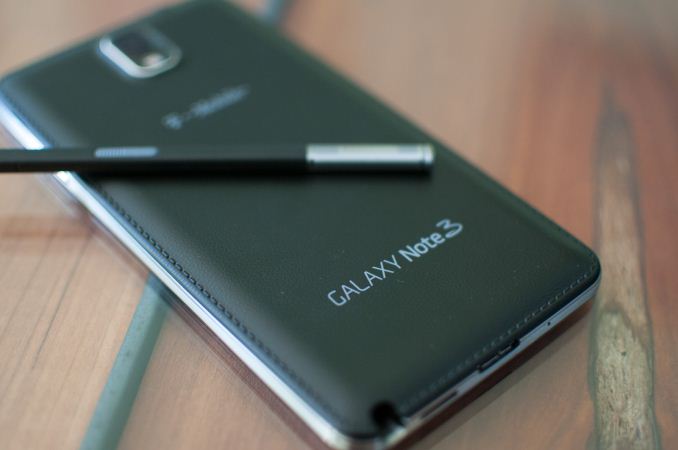

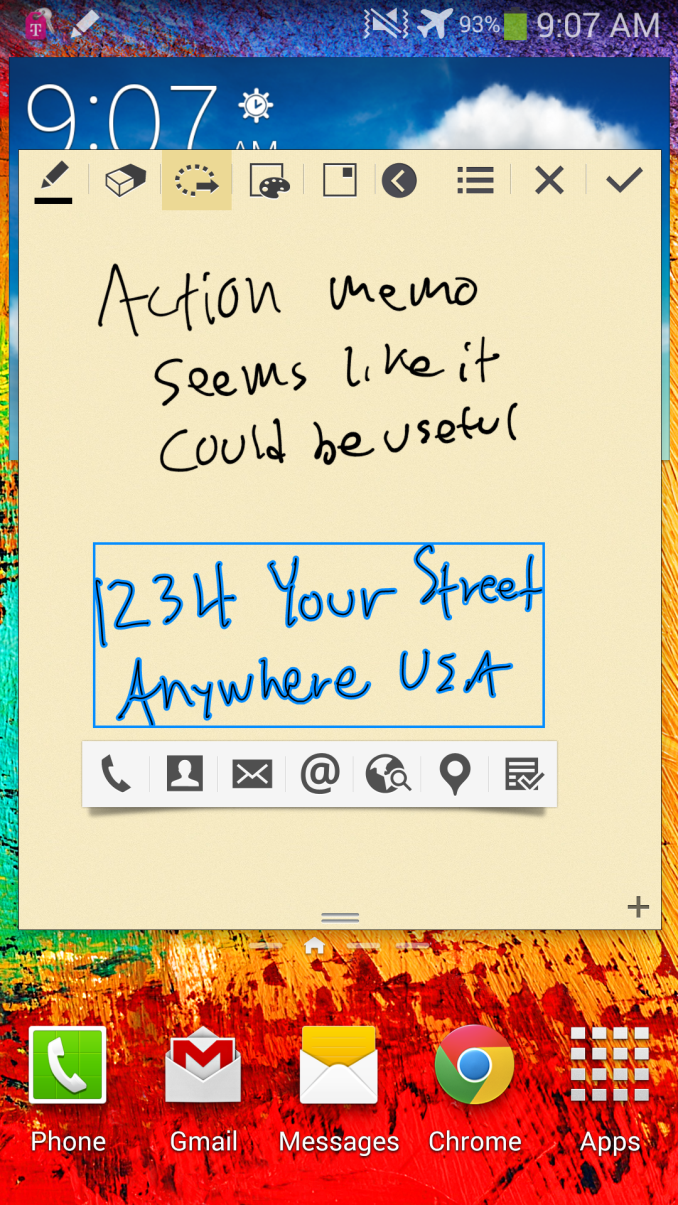

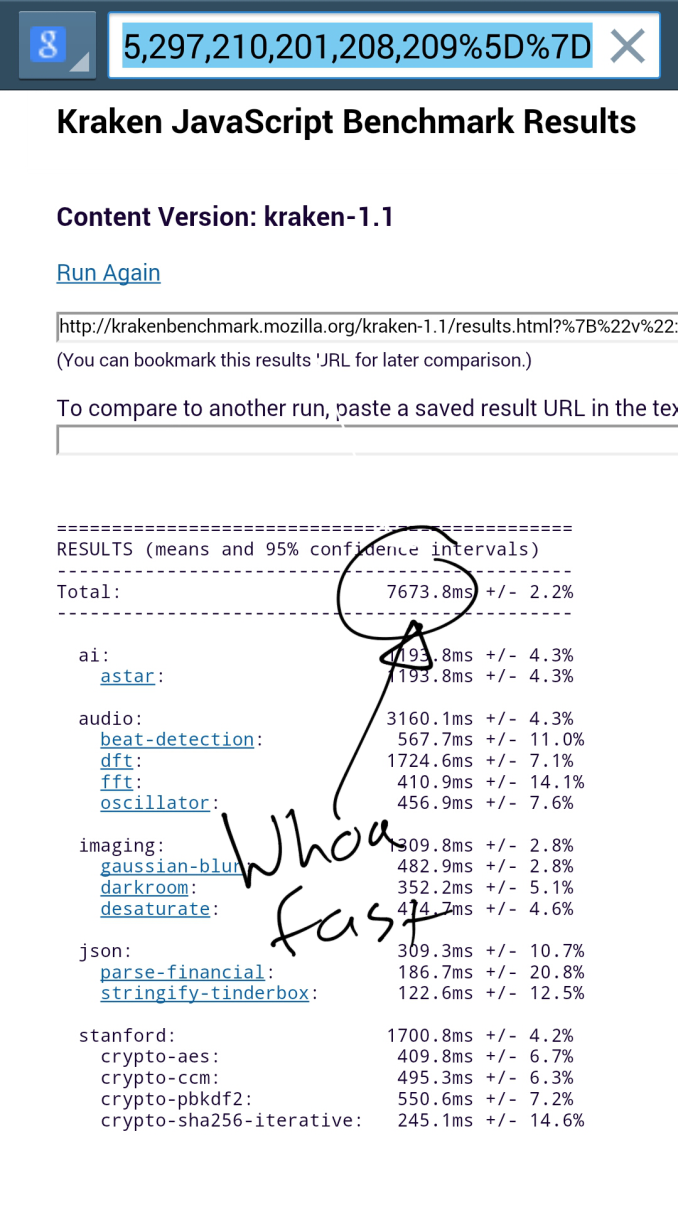
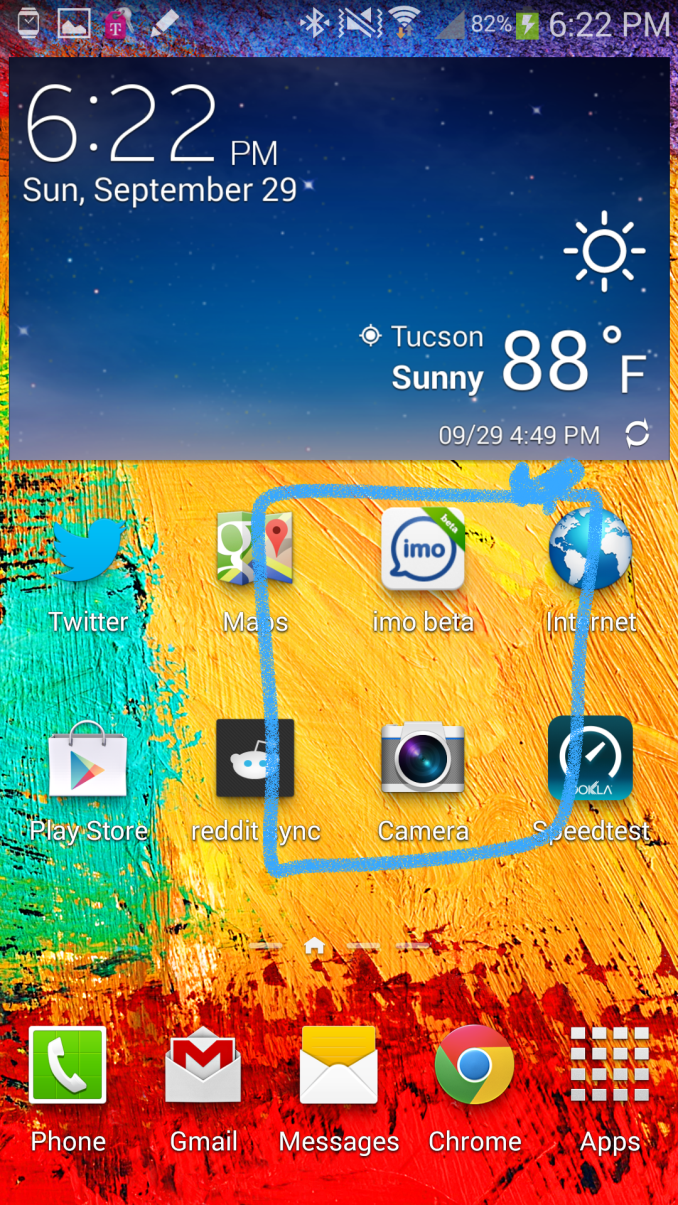
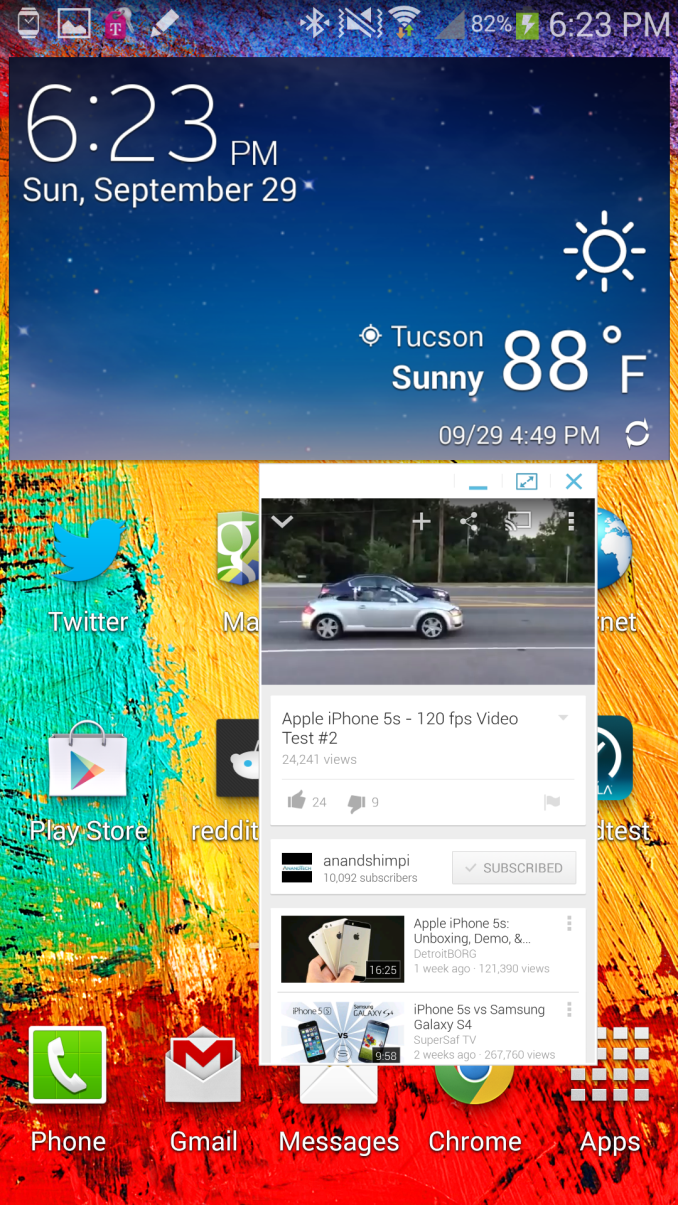
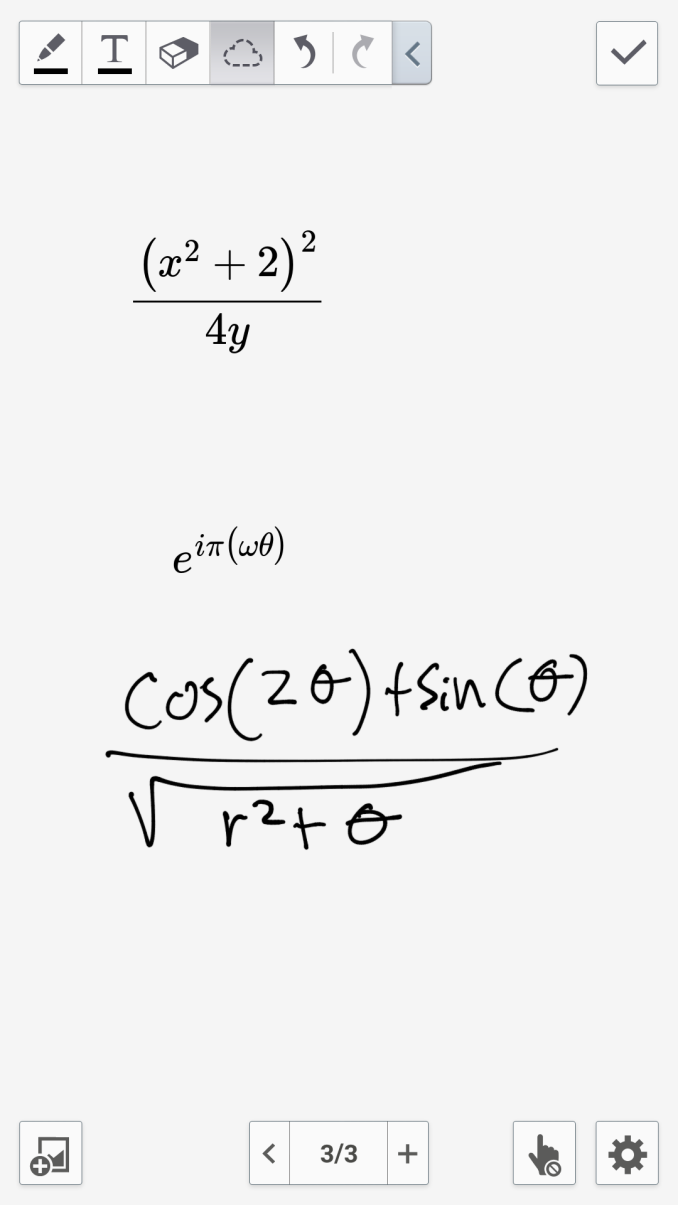
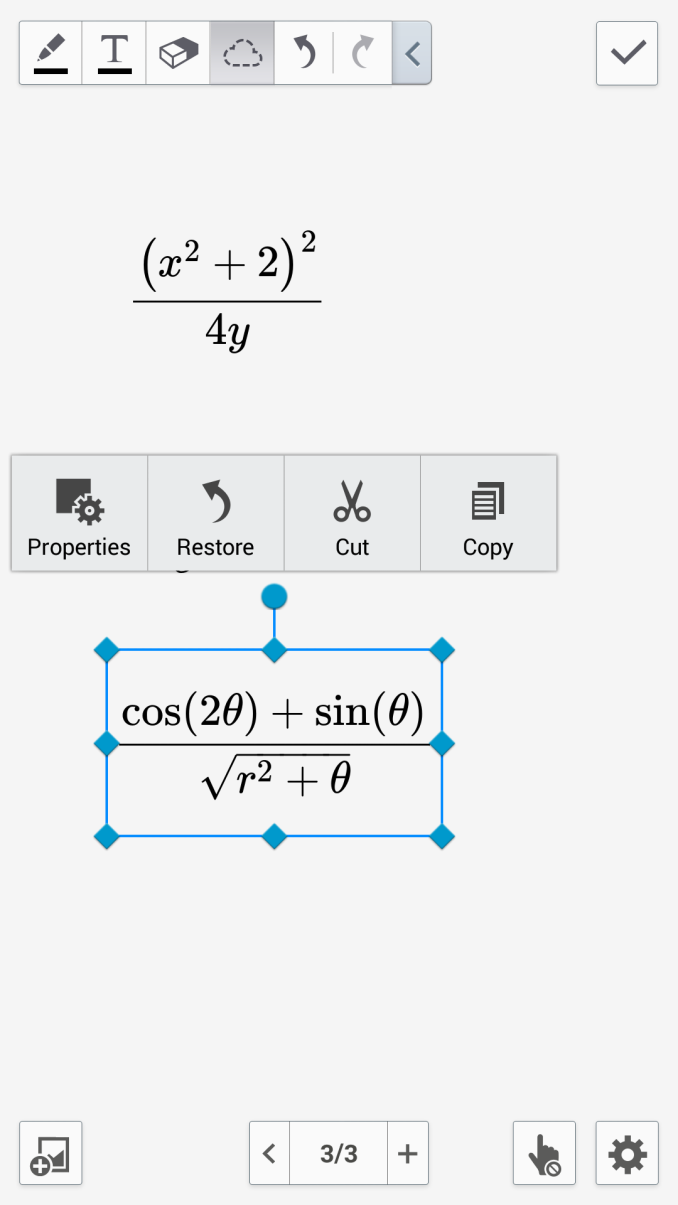








302 Comments
View All Comments
darkich - Tuesday, October 1, 2013 - link
..according to just published analysis on Display mate site, Note 3 pretty much has THE BEST DISPLAY on the market right now, with excellent readings across the board.And the performance!
Both the processing ability and memory speed are alongnthe lines of a high end ultrabook from just a couple of years ago!
All in all, gadget of the year imho.
One that I'll be very happy to spend my money on.
repoman27 - Tuesday, October 1, 2013 - link
"3.0 at present should give you faster transfer rate (it doesn't in practice as you'll soon see), and eventually faster charging, but the Note 3 continues to use Samsung’s 2.0 amp charging spec and rate, but more on that later."I thought USB 3.0 only specced up to 900 mA, and Battery Charging 1.2 Specification (which is applicable to both USB 2.0 and 3.0 devices) went up to a max of 1.5 A for "PDs" or portable devices. That would make Sammy's 2.0 A spec proprietary, just like Apple's 2.1 A mode, so they really could have gone wherever they wanted with it up to the 3.0 A safety limit for Micro-B/AB connectors.
USB Power Delivery Specification 1.0 defines new modes up to 5V @ 2A, or 20V @ 3A for Micro-B/AB, but it requires new detectable cables for > 5 V or 1.5 A.
WhitneyLand - Tuesday, October 1, 2013 - link
Another vote for taking a stronger stance against benchmark manipulation. Yes, AT called it out first, but more can be done. It needs to gain a dedicated subheading in future reviews and ideally dedicated pipeline articles.Someone commented this practice is no different that turning off power savings in a PCs bios and running a benchmark, but that is a bad analogy. The problems here are:
1). Benchmarks become incomparable between devices.
2). The practice is a deliberate move to make benchmarks more artificial while the best benchmarks try to move closer to approximating real world use.
3). The lack of full disclosure is disingenuous on the part of manufactures and weakens trust in the industry.
Call it cheating or not, the results are not good for anyone. Of all the people on the planet who can improve this situation AT may be in the best position to do so. Situations like these are the highest calling of journalism. We think this is important and respectfully ask for your help.
dawheat - Tuesday, October 1, 2013 - link
I think there's a big difference between running your hardware at over 100% in a benchmark and running it at 100%. There needs to be clarity on what exactly Samsung is doing here (unlike the S4).If they are truly only running it at 100%, then I have to wonder why the benchmark isn't doing so by default? I'd be concerned then in software variation between devices where the benchmark runs one device closer to 100% than another. There should be validation that a CPU benchmark is stressing the CPUs at 100% across all the devices it's being tested across. If not, you're testing the benchmark software as much as the device, instead of just the device.
ddriver - Tuesday, October 1, 2013 - link
Blame power saving features implementation - if you ask me it makes no difference whether you explicitly hint the CPU to go full frequency for a particular task, or the CPU analyzes load and applies the clocking accordingly. The latter takes time, thus the scores are a little lower, because the CPU doesn't run at full frequency for the duration of the test.As I already mentioned, this hack doesn't really make the CPU any better than it is, it just ensures the benchmark is ran at the processor peak capabilities and no performance is lost due to underclocking and adjusting the frequency dynamically.
ddriver - Tuesday, October 1, 2013 - link
Benchmarks are ALREADY incompatible between OS vendors, measuring CPU performance with JS code that runs on fundamentally different JS engine implementations is pointless to say the least.dawheat - Tuesday, October 1, 2013 - link
Brian - your brightness results are in line with the DisplayMate review (http://www.displaymate.com/Galaxy_Note3_ShootOut_1... but could you also see if you can replicate the auto-brightness "overdrive" for lack of a better term in bright ambient light?tanyet - Tuesday, October 1, 2013 - link
Just wanted to fix the linkhttp://www.displaymate.com/Galaxy_Note3_ShootOut_1...
tanyet - Tuesday, October 1, 2013 - link
I'm may be reading this wrong but the impression I got from DisplayMate was that the Note 3 was much brighter."Up until the Galaxy Note 3, OLED displays have been somewhat to significantly dimmer than competing LCD displays. The Note 3 has changed that in a big way…it’s an impressive 55 percent brighter than the Note II and a solid 25 percent brighter than the Galaxy S4. For most image content it provides over 400 cd/m2, comparable or higher than most LCD displays in this size class. Even more impressive is that when Automatic Brightness is turned on, the Note 3 hits an incredible 660 cd/m2 in high ambient light, where it’s needed (85 percent brighter than the Note II and 40 percent brighter than the Galaxy S4 with Automatic Brightness) – the brightest mobile display we have ever tested in the Shoot-Out series. An impressive achievement for OLEDs!"
Brian Klug - Tuesday, October 1, 2013 - link
I consider the ambient light boost method almost along the same lines as benchmarkboost – it isn't something that's there all the time, and it's not accessible unless you're in certain circumstances. Other OEMs have done this, and I continue to measure in a dark room with the slider at 100%.That said, the fact that AMOLED can go to 600+ nits is old, even back with SGS2 you could modify the kernel and drive the panel that high.
-Brian